St. Amand
Red Terre de Fer French Pitcher - St. Amand - 1890s
Red Terre de Fer French Pitcher - St. Amand - 1890s
Couldn't load pickup availability
Transport yourself to a vintage French country home with this stunning 19th-century bathroom water jug, known in French as a "broc." Made in the 1890s by A. Lebacqz & M. Bouchart of St. Amand Nord, this red transferware pitcher in Terre de Fer exudes rustic elegance.
The "JARDINIERE" pattern, inspired by lush gardens, is rendered in intricate red florals that seem to tell a story of pastoral beauty. Its bold design, paired with the timeless appeal of ironstone, makes this piece a standout for collectors and enthusiasts of antique French faïence.
The underside bears the mark "JARDINIERE-St Amand & Hamage," affirming its authenticity and origins. This broc's sturdy yet elegant form is ideal for both decorative and practical use—be it as a vase, a centrepiece, or simply a cherished collectible.
- Material: Ironstone / Terre de Fer
- Pattern: Jardiniere
- Style: Provincial French
- Technique: Transferware
- Place of Origin: France
- Mark: St. Amand & Hamage
- Date of Manufacture: 1890s
- Condition: Good vintage condition, some slight signs of wear and tear
Dimension:
Height: 15 cm | 7.4 in
Length with handle: 22 cm | 8.6 in
Volume: ca 1 litre
Share
- Worldwide Shipping
- Secure Packaging
- Loving Curation
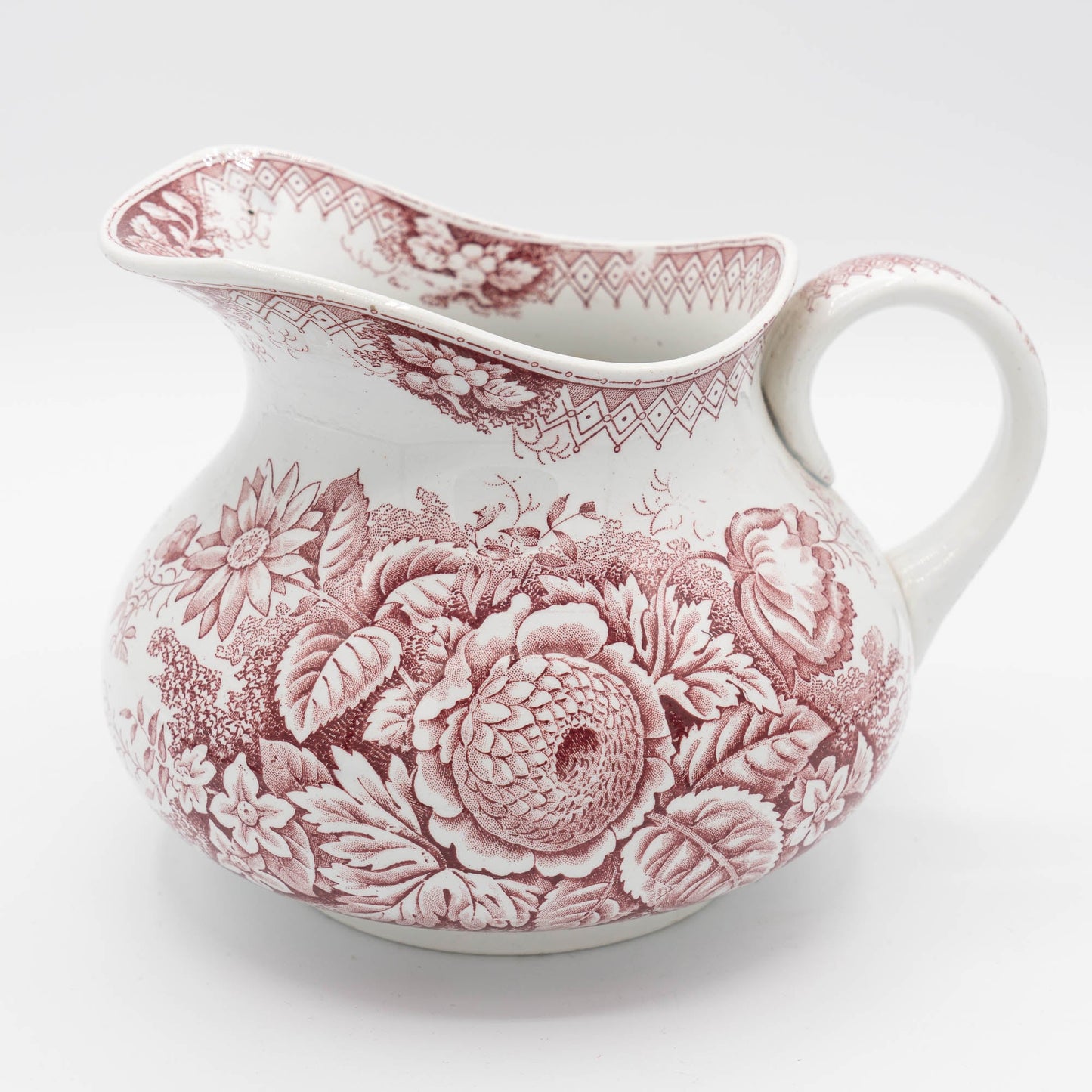
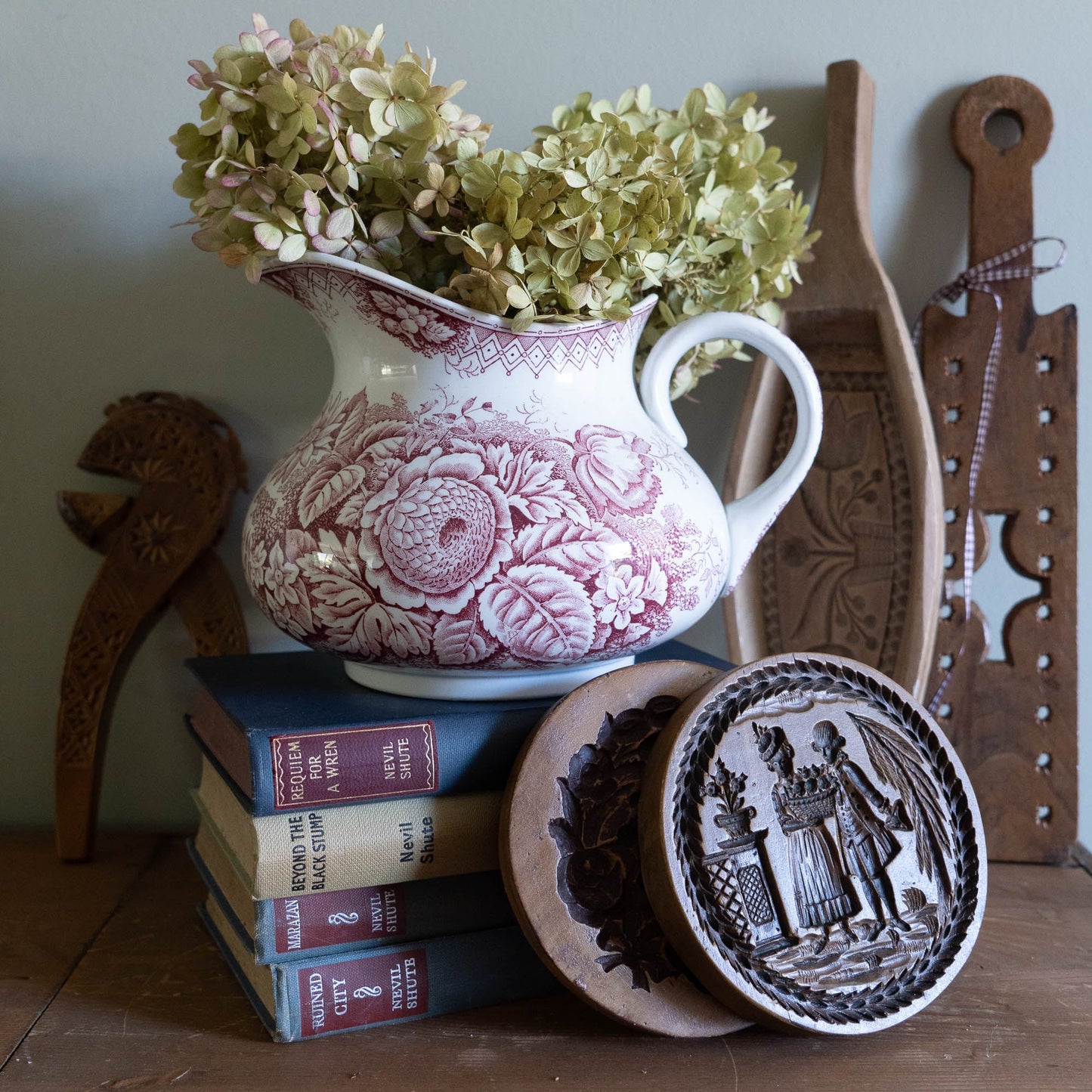
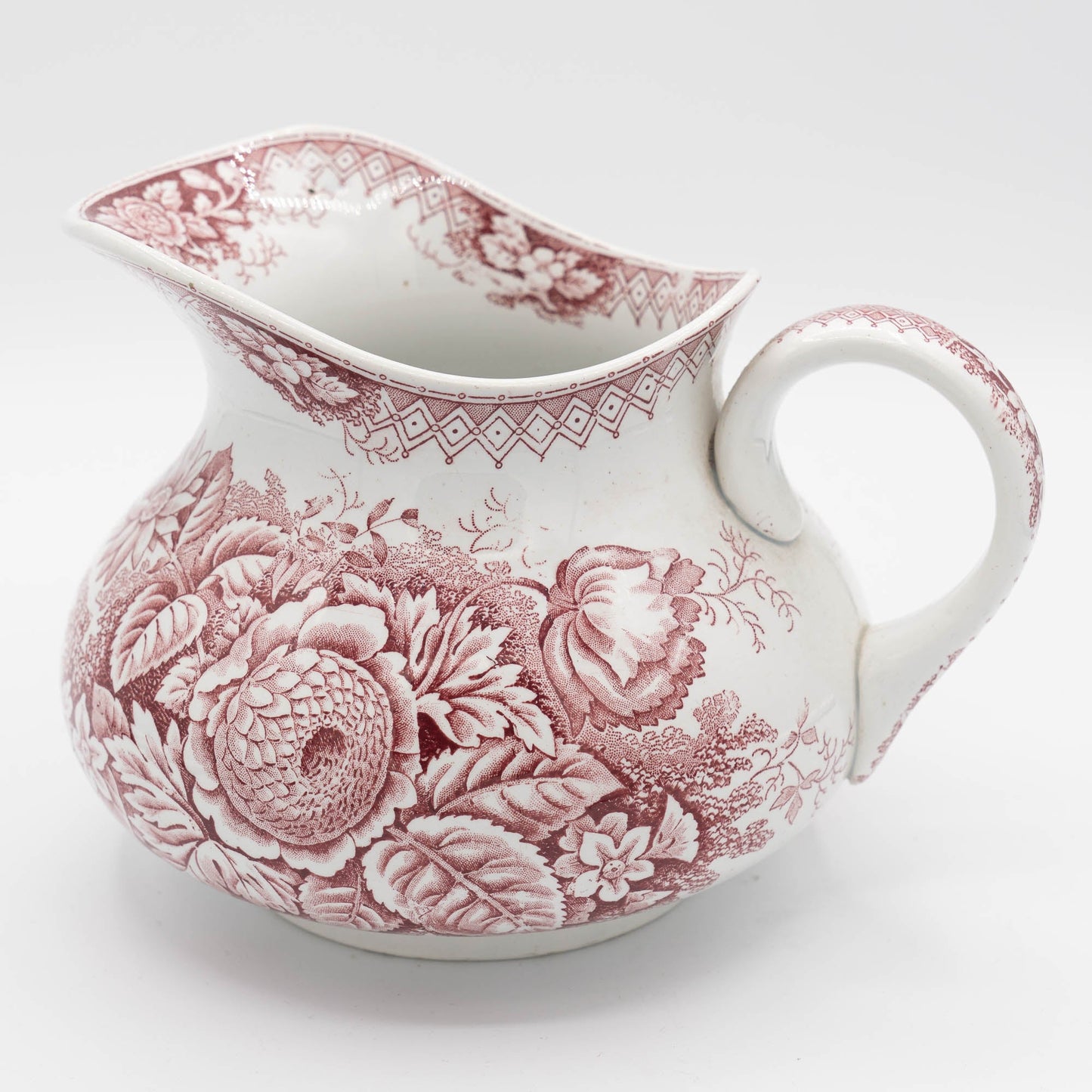
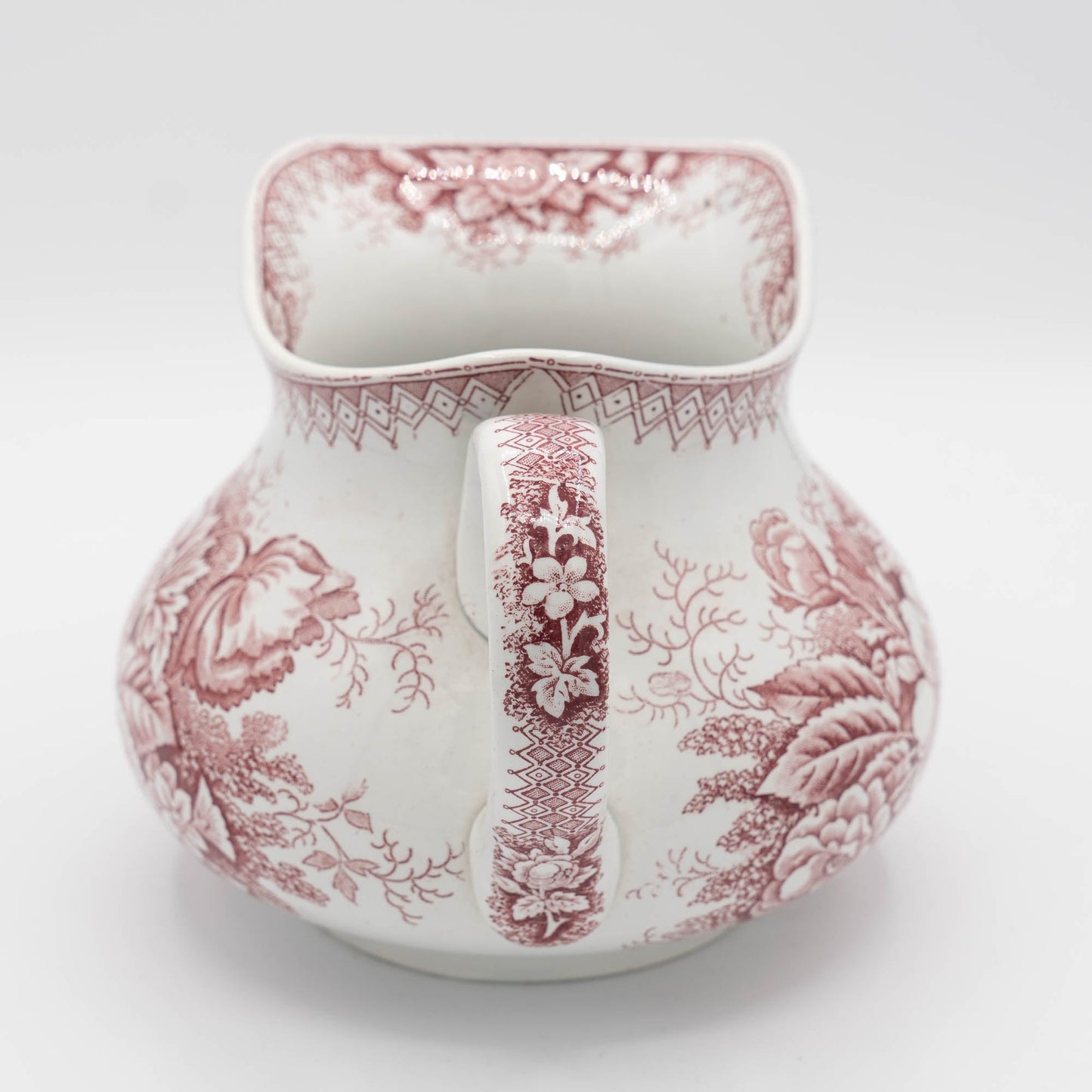
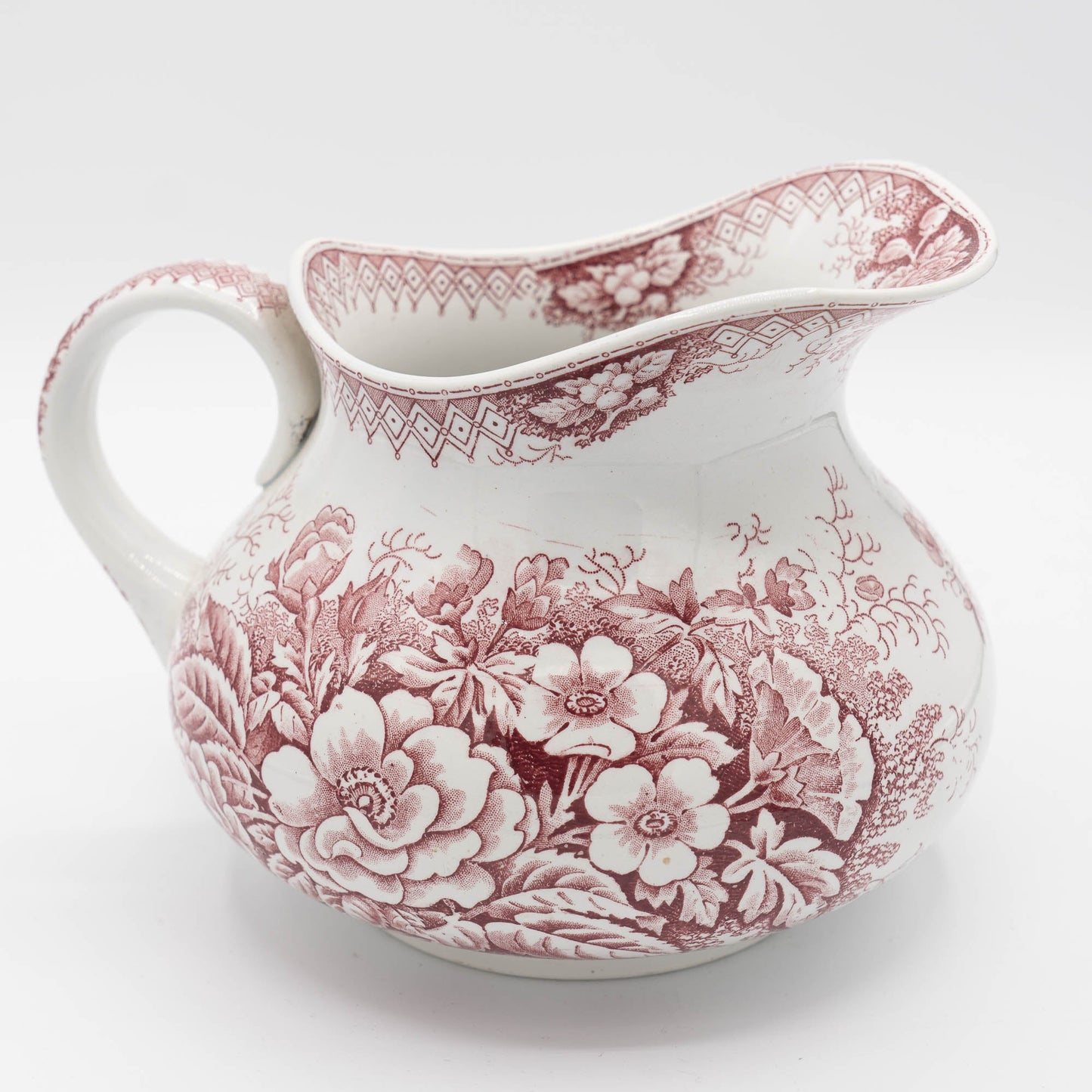
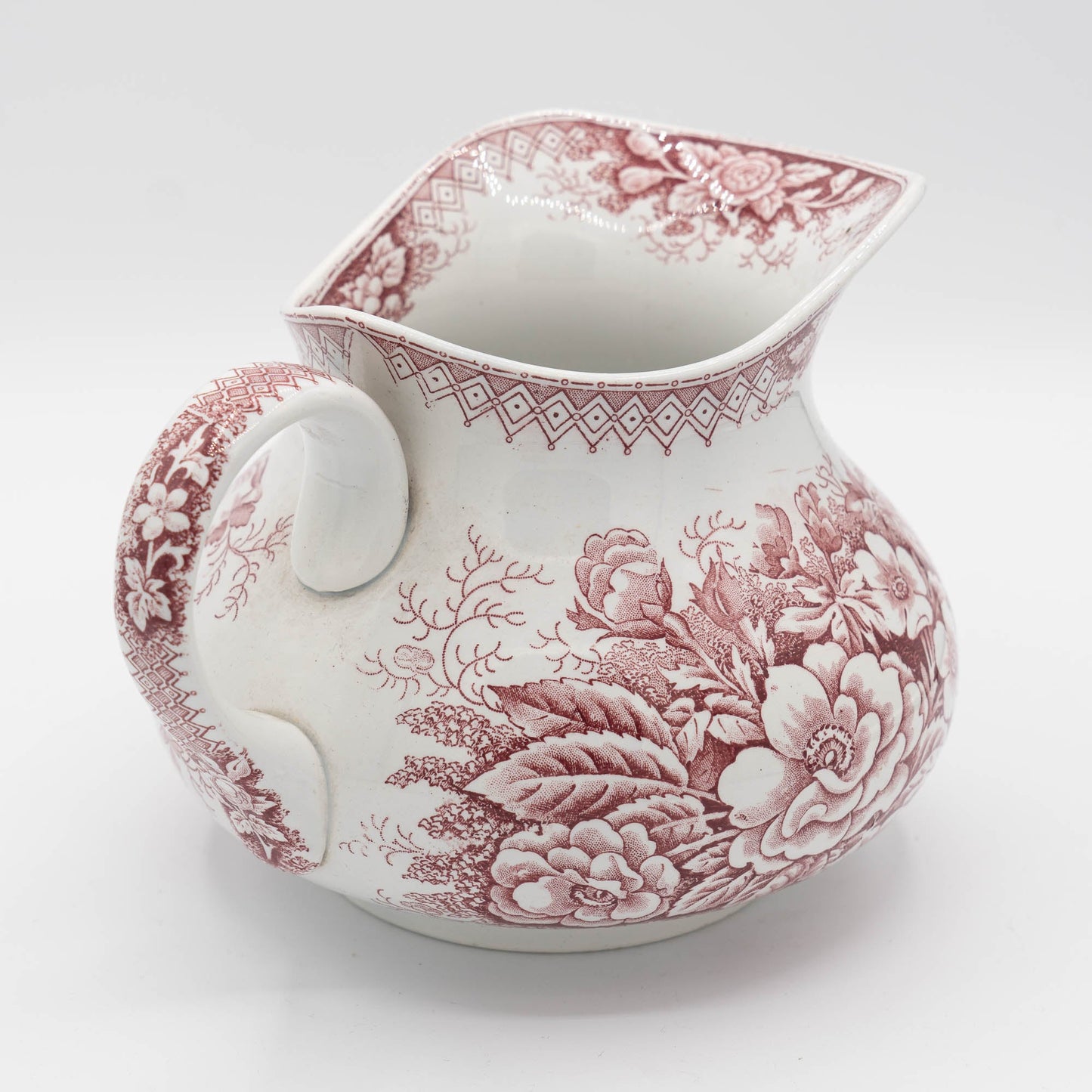
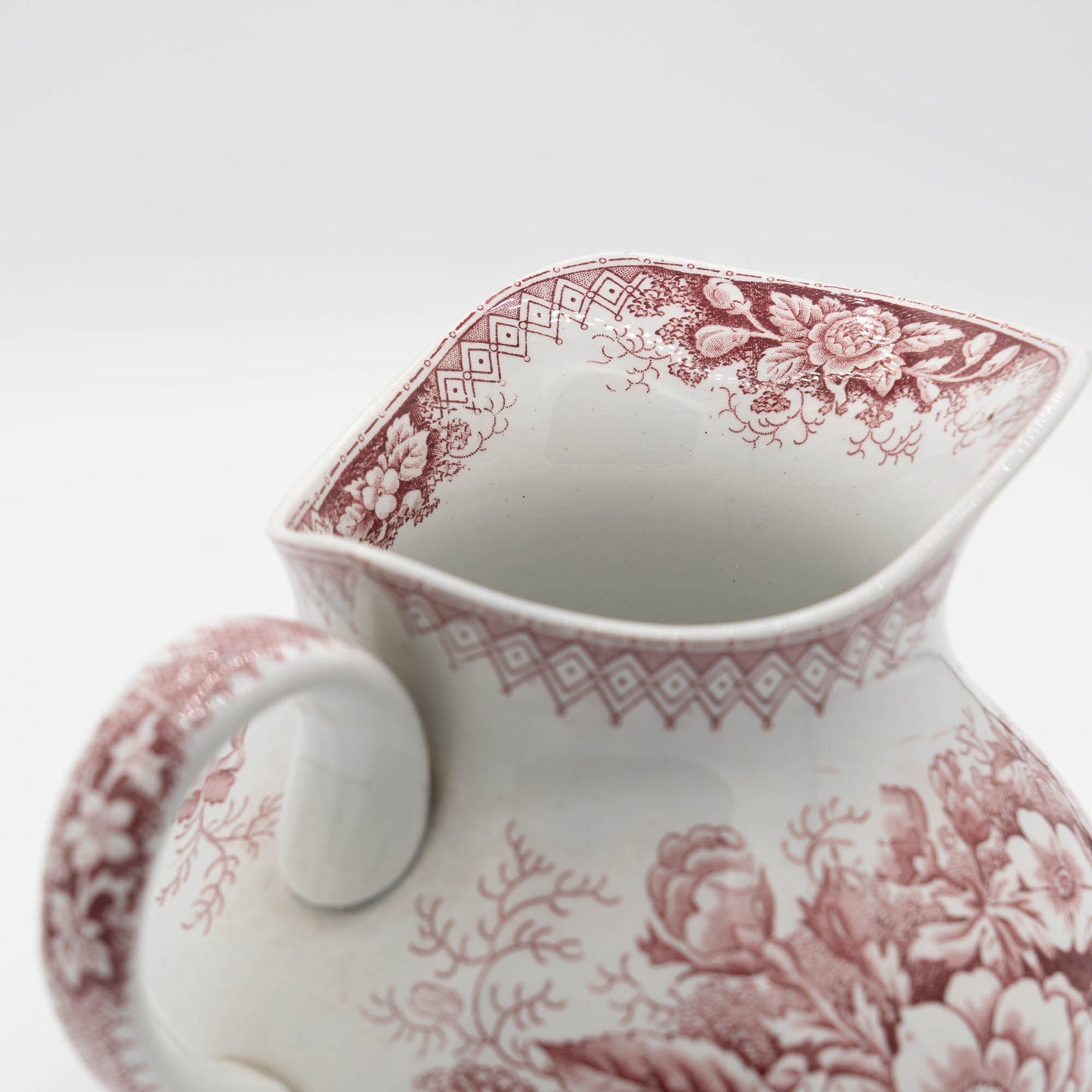
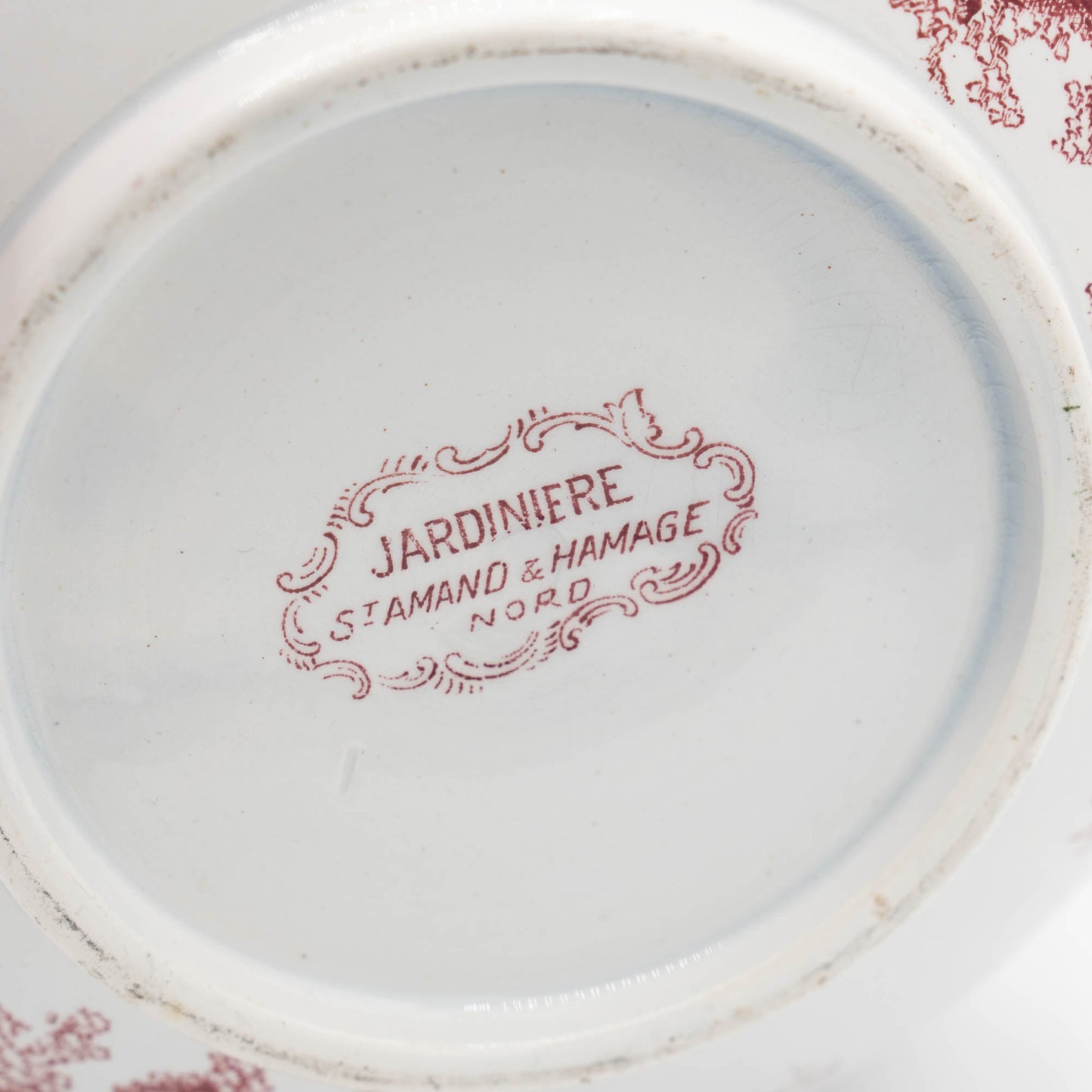
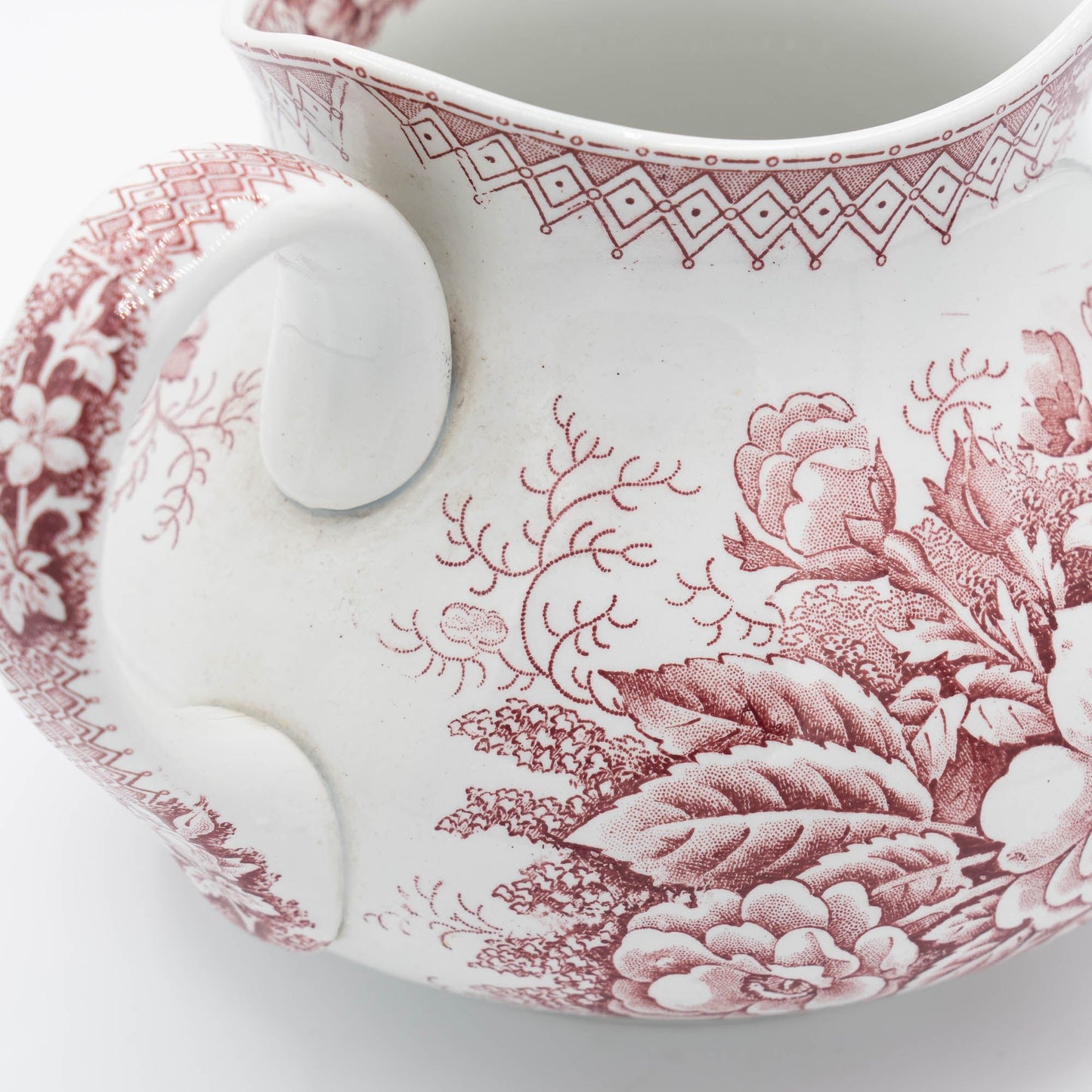
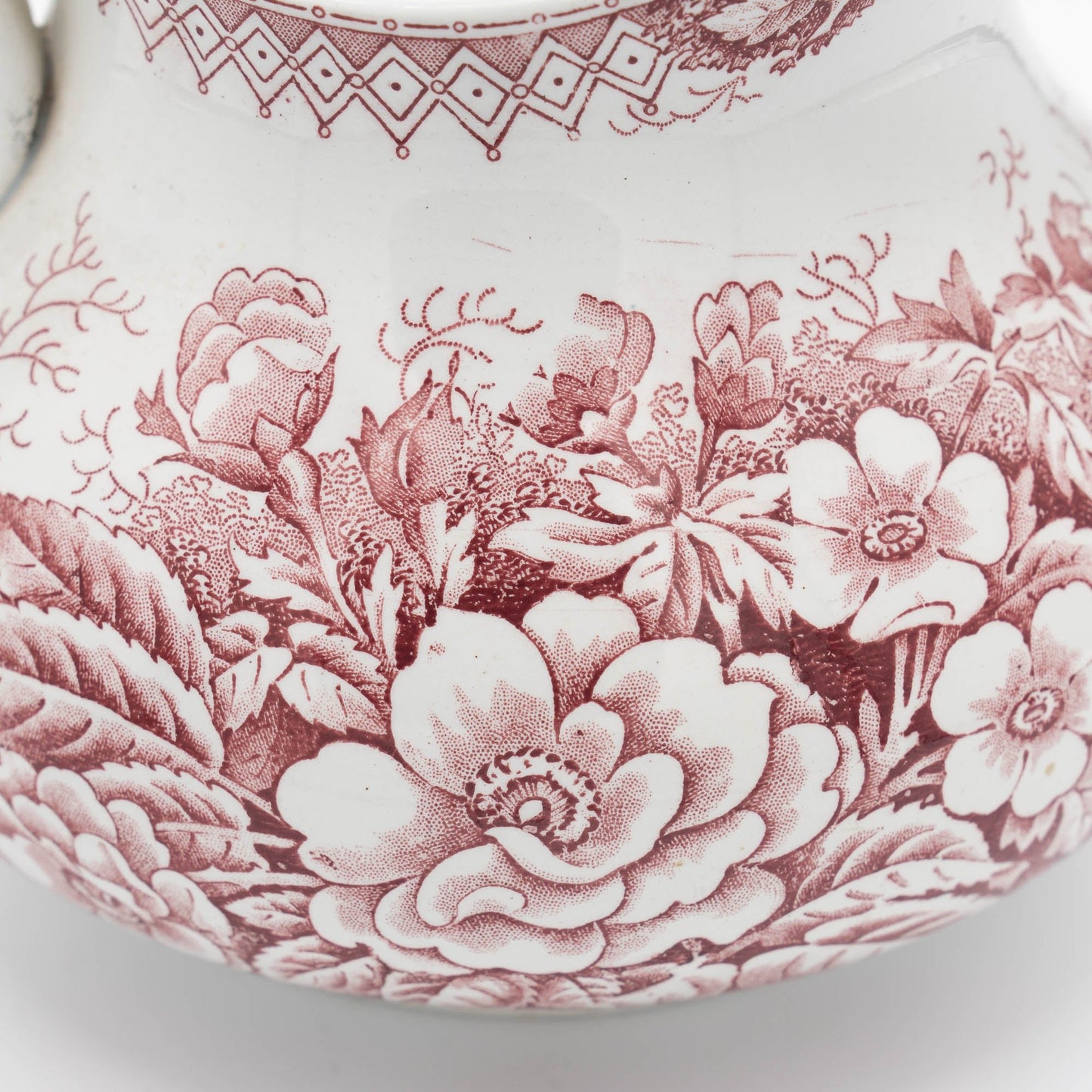
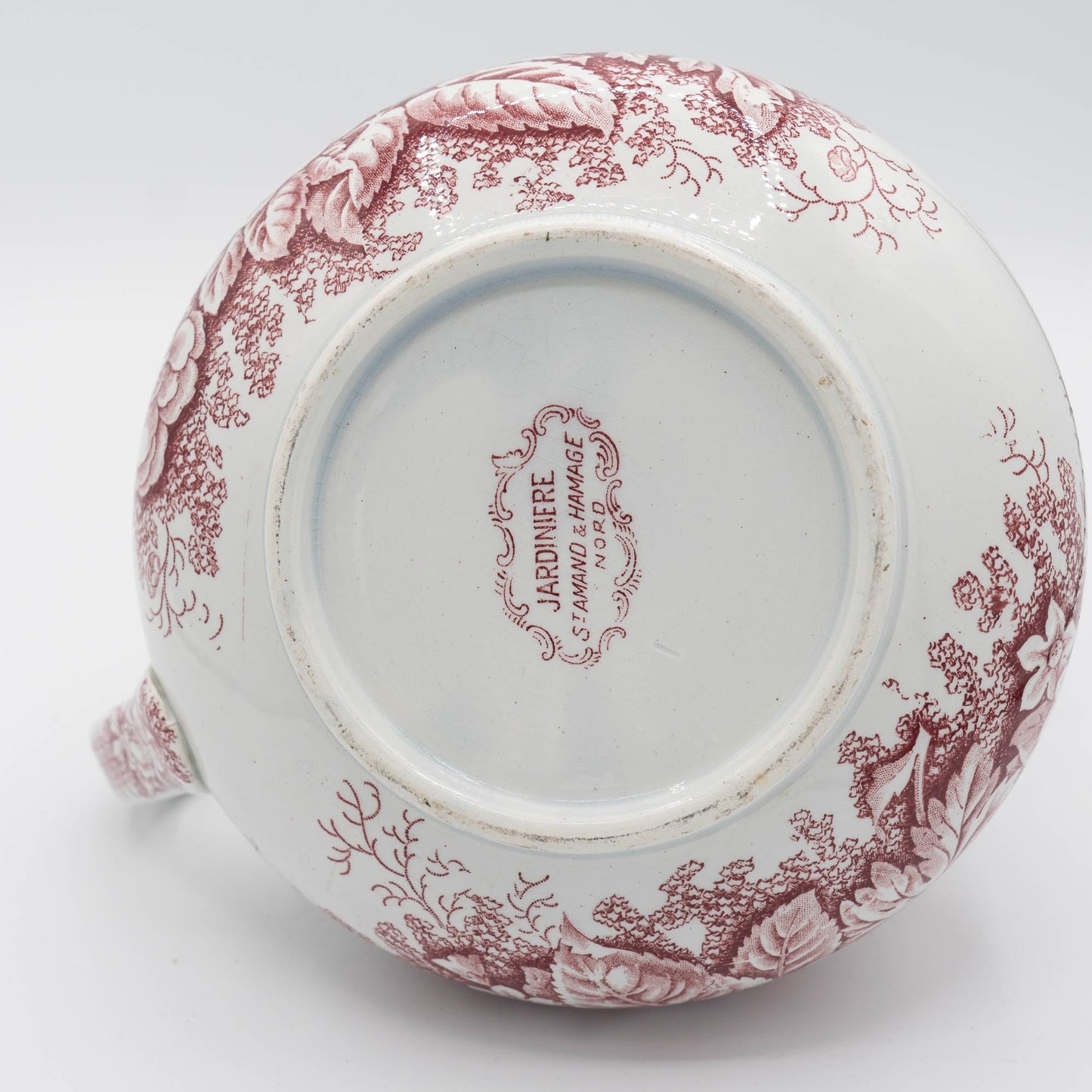
Origin & Maker
Saint-Amand-les-Eaux, located in northern France, has a rich history of faience (tin-glazed earthenware) production dating back to 1705. The first factory was established by Nicolas Desmoutiers, known for its colorful and blue monochrome decorations featuring floral and animal motifs. In 1735, management passed to his daughter Marie-Josèphe and her husband, Robert Flescher. Later, the Dorez family, descendants of ceramist Barthélémy Dorez, leased the company. In 1775, the factory was sold to Bécart, who closed it in 1776.
A second factory was founded in 1718 by Pierre-Joseph Fauquez, a ceramist from Tournai. Under the Fauquez family's management, the factory produced a variety of faience pieces, including those using the bianco sopra bianco technique, which involved painting white overglaze on a blue-white glaze. They also created soft-paste porcelain from 1771, with designs inspired by Chinese porcelain. Production ceased in 1794 during the French Revolution.
In 1818, Maximilien Joseph de Bettignies, also from Tournai, took over a third factory in Saint-Amand. He expanded the production to include a diverse range of artistic pieces, such as statuettes, vases, and busts, often featuring Tournai-inspired decorations like acorns, laurel, and cornflowers. Encouraged by success, de Bettignies constructed a larger factory in the hamlet of Moulin des Loups, specializing in soft-paste porcelain.
In 1896, the factories merged, and the trademark "Saint Amand et Hamage (Nord)" was established. The company expanded rapidly, employing approximately 700 people at its peak. However, by the mid-20th century, the factories gradually closed, with the last one ceasing operations in 1962.
Today, ceramics bearing the "Saint Amand et Hamage (Nord)" mark are considered antique rarities, reflecting the rich history and craftsmanship of French faience production.
Blog posts
View all-

A Serendipitous Morning at the Rue de Bretagne ...
There are few joys in life that match the thrill of stumbling upon a hidden treasure, and for me, flea markets hold that magical allure. One of my favourite flea...
A Serendipitous Morning at the Rue de Bretagne ...
There are few joys in life that match the thrill of stumbling upon a hidden treasure, and for me, flea markets hold that magical allure. One of my favourite flea...
-

Emile Bourgeois and "Le Grand Dépôt" in Paris
Recently, I found this stunning Sarreguemines wash set. It was at the Brocante in Belfort, France. On this day, we had got up at 4 AM to be there in...
Emile Bourgeois and "Le Grand Dépôt" in Paris
Recently, I found this stunning Sarreguemines wash set. It was at the Brocante in Belfort, France. On this day, we had got up at 4 AM to be there in...
-

The Legacy of Robert Haviland: A Journey from N...
The story of Robert Haviland porcelain is one of artistry, transatlantic ambition, and enduring heritage. It begins in the mid-19th century when David Haviland, an enterprising New Yorker, founded Haviland...
The Legacy of Robert Haviland: A Journey from N...
The story of Robert Haviland porcelain is one of artistry, transatlantic ambition, and enduring heritage. It begins in the mid-19th century when David Haviland, an enterprising New Yorker, founded Haviland...














